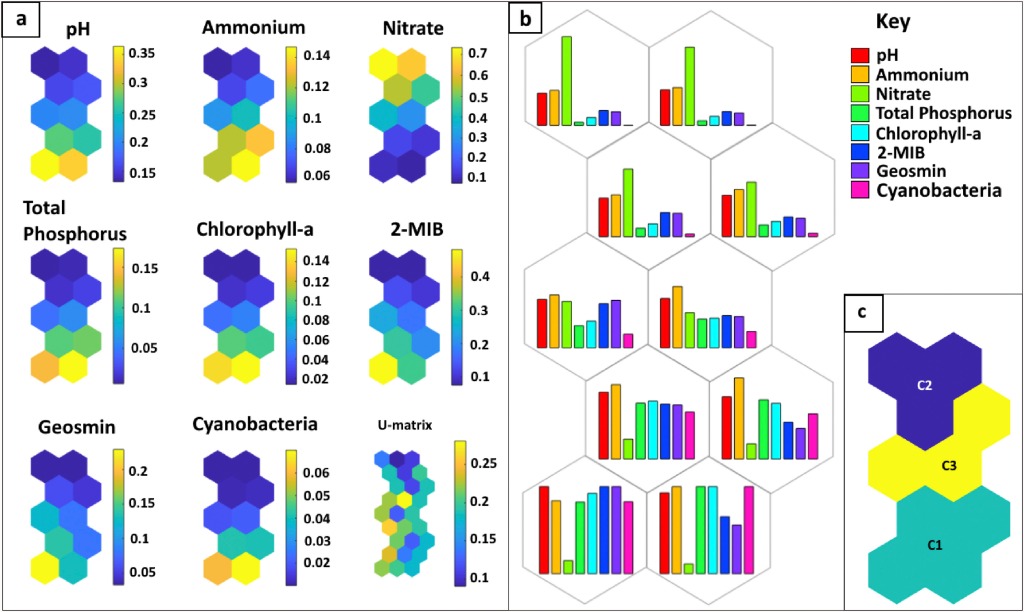
Authors
Taste and odour (T&O) compounds (most commonly 2-MIB and Geosmin) in drinking water are becoming an increasingly global problem for water management. Here, the trigger(s) for 2-MIB and Geosmin production were investigated in Plas Uchaf reservoir (North Wales, UK) with detailed water sample analysis between 2015 and 2016. Historical abstraction data from this reservoir and 4 reservoirs in Somerset (England, UK) were compared statistically using Self-Organising Map (SOM) analysis. In-reservoir measurements (2015–2016) revealed an 85% reduction in ammonium from the primary external loading source led to lower 2-MIB and Geosmin concentrations, with peak concentrations of 2-MIB declining from 60 to 21 ng l−1 and Geosmin declining from 140 to 18 ng l−1. No other measured water chemistry parameter showed a significant difference between years. The SOM results support the in-reservoir findings, revealing 2-MIB and Geosmin to be associated with high ammonium relative to nitrate for all 5 reservoirs. We conclude that ammonium is key for stimulating cyanobacterial productivity and production of T&O compounds. Whilst it is well understood that adequate availability of phosphorus is required for rapid growth in cyanobacteria, and hence should still be considered in management decisions, we suggest that monitoring sources and concentrations of ammonium is key for managing T&O outbreaks in drinking water reservoirs.
